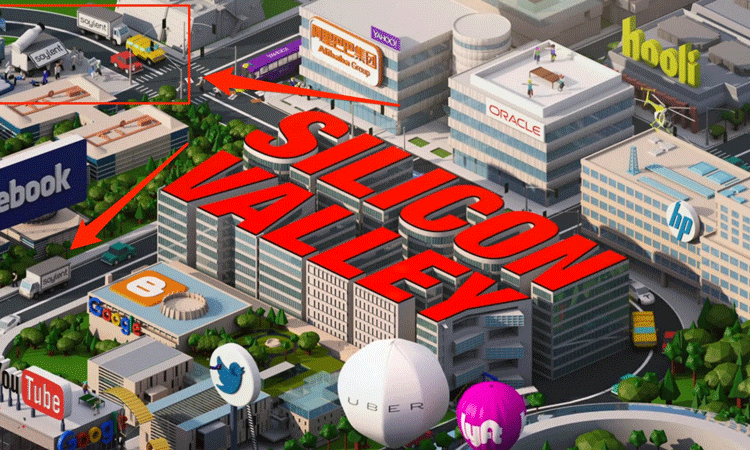When putting together the V&A’s The Future Starts Here exhibit, there was a moment when curators Rory Hyde and Mariana Pestana were overcome with a palpable sense of disillusionment.
“I was reading quite a lot of dystopian books that document the power of Facebook and social networks, how they are almost completely all-encompassing,” Hyde said. “At some point, you realise the same powers that have that globe-spanning reach and can be misused, can also be reappropriated to other contexts. There are equally valid counterpoints out there; the future is not completely defined – there is still a chance to change things.”
The Future Starts Here
The Future Starts Here, which runs from May 12 to November 4, 2018, was never going to be a simple undertaking for the V&A. Besides the fact the exhibit will deal with a vast array of technologies, with more than 100 objects spanning artificial intelligence, internet culture, satellites and smart appliances, the museum is used to dealing in historical memory… not speculation.
Early on, Hyde said the only way to approach it was to focus on “the real rather than the inventive, or fiction”. Hence the objects exhibited are on the market, or real prototypes and experiments. As a collective whole, these objects should tell the story of “where we are taking this and what our role in this is,” Hyde said. Essentially, how technology and design stand to shape our everyday experience.
It might seem that Google and Facebook rule the Earth; but the smaller ‘counter projects’ that often stem from community-oriented thinking can redress the dystopian narrative. “The momentum of these big organisations is so great, it’s easy to feel disillusioned and believe the hype,” Hyde said. “We reclaimed our optimism part way through the curation,” he said. “To document the present and where it might be taking us might be more powerful than revisiting historical ideas of the future.”
The exhibition is organised in terms of scale, beginning with the home, then public spaces, before leaping to the planet and ending in the cosmos.
“It is structured around a group of questions – that’s the key device we are using to open up the possibilities of little projects,” Hyde said.
Through their research, the curators saw one clear trend: a sense that people feel they have little control in a world where tech giants are seemingly making the rules. “This can cover everything from Apple changing its charging cable, to the sense that the government is reading emails. The future is no longer in our hands and somehow the trajectory of technology is defining that future and we are simply passengers.” This is where ‘the rise of collective power’ – the ‘counter projects’ – comes into play.
Who built the city?
In one example, the V&A will exhibit a model of Apple’s HQ, designed by Foster + Partners, alongside a crowdsourced pedestrian bridge in Rotterdam. “It raises the question – who built the city? Who has the authority or ability to add a giant new piece of infrastructure? Is it the residents of Rotterdam, or Foster + Partners? There is still plenty of scope for you to take control of the trajectory of these technologies and how they interface with society.”
In another example, a Bloomberg terminal sits alongside an open source bitcoin miner built using an Arduino, running in real-time. “The terminal has these shortcuts that reinforce the sense the financial trader is master of the universe, with complete control of these systems and flows of markets. Yet somehow there is this other form of decentralised power that uses technology to reinforce that sense of trust. They are different sides of the same dialogue.”
The planet as design
Moving to a grander scale, the planet-wide section asks: ‘Should the planet be a design project?’ Hyde explained: “In terms of climate change, the planet is a product of an unintentional design project. Now people are starting to talk about geo-engineering and radical plans to counteract those forces through cloud seeding and such. But does that cross a line if you are intentionally setting out to change the climate? It’s one of the ethical questions we put on the visitor.”
The topics and questions Hyde and his team have come up with are as vast as the challenge they set themselves with the exhibition. So often the V&A is used to focusing on an artist or movement in history. This exhibition feels experimental for the museum. “This is more trying to piece together the common elements and understand where we are,” Hyde explained.
Videogames: A new frontier
Videogames, a second exhibition running from September 8, 2018 to February 24, 2019, is also a new frontier for the museum. Focusing on the games industry from the mid-2000s onwards, it looks at how the internet and social media have changed the medium.
Curator Marie Foulston acknowledges that the move is somewhat radical for the V&A. But it’s still focussed on design. Through the exhibit, for instance, they curators aim to challenge the idea that gaming is frivolous by exhibiting titles that deal with deeper social issues and personal experiences. It also looks at how offshoots such as fan art become design works in themselves, and even go on to influence game designers. “Players transcend the role of designer, as in Minecraft,” Foulston said. “They self-organise and create in that space.”


Comments are closed, but trackbacks and pingbacks are open.